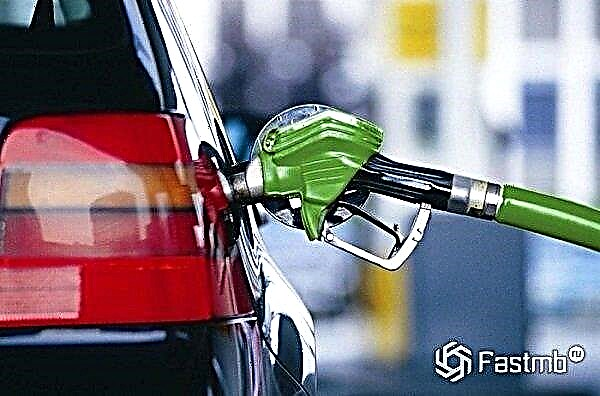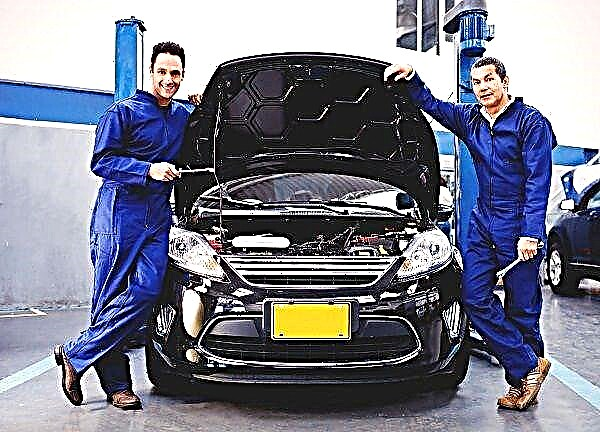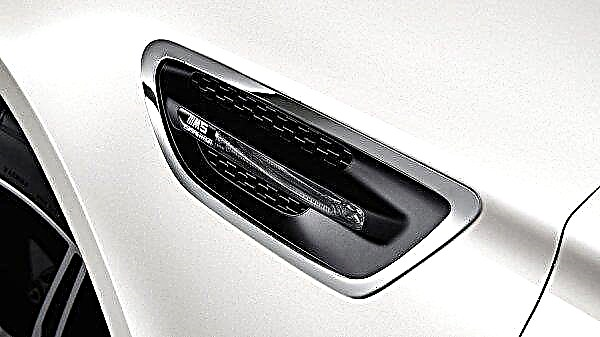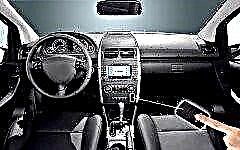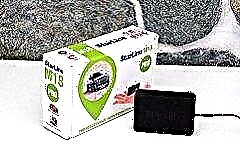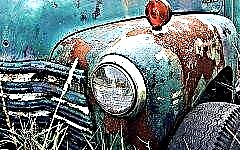

The content of the article:
- Identifying corrosion before it occurs
- Car wash
- Preventing the spread of rust
The appearance of rust on the car body is a horror for every driver. The damage caused by this problem can erode the outer panels, degrade the strength and rigidity of the vehicle frame. Prevent these problems with our tips! It is better to carry out prevention in advance than to deal with corrosion at the time of its spread.
Method # 1 - detecting corrosion before it appears

- Inspect your brake pads and bumpers. Wheels are one of the most vulnerable places in a car. Since they are very often heavily contaminated, people neglect to check them. Most tire manufacturers recommend that they be inspected every 10,000 km. It is enough to take out the wheel and turn it over on its back to check for corrosion with a flashlight. Remember to do the same for the front and rear bumpers.
If there is too much dirt in the wheel, take a good look at it for rust. Use a hose to clean, then check again. Repeat the procedure for the bumpers. Older vehicles with metal bumpers sometimes rust faster than the body itself.
- Look for signs of corrosion where parts of the body meet. Your car is likely to rust where the two metal parts touch. Thorough wiping will help increase the protection provided by the paint. Examine all areas of your vehicle in detail, especially the door and fenders Open the doors, hood and trunk while you check your vehicle for corrosion. If you notice small bubbles under the paint, then get ready for an unpleasant surprise.
- Check the underside of your car regularly - it gets the most dirty, like the wheels, and is therefore more susceptible to corrosion. If you live in a cold area where there is a lot of rainfall, then be prepared for salt and other chemicals used to treat snow and ice on the roads. These factors increase the risk of corrosion.
When changing the oil, also pay attention to the condition of the internal parts. And don't forget to follow the safety rules when inspecting the underside of the vehicle.
- One of the basic rules that relate to corrosion prevention is the removal of moisture from the surface of the body and individual parts. Of course, most cars are immune to this problem, but being too careful won't hurt.
Paint, special coatings and plastics are designed to protect the metal, but over time they will still become obsolete and unusable. If you notice that in any area the water is passing inward, take measures regarding the repair.
Remove all moisture and dry the surface thoroughly. If the body structure is made without taking into account water drains, make them yourself, otherwise you risk damaging it.
Check your vehicle's service manual to ensure tightness and integrity are not compromised.
Method # 2 - car wash to prevent corrosion

- Wash your car regularly. While dirt is often non-corrosive, sludge and impurities can seep through the paint, damaging the body over time.
Bird droppings and gasoline spilled during refueling can reduce your vehicle's rust protection even further. Over time, they damage the coating and make it more susceptible to corrosion. Flush your car every few weeks to prevent sand and dirt from damaging your paint.
- Wash the vehicle chassis. If you live in a snowy area, salt and chemical deposits on the underside of the machine can compromise its ability to resist corrosion. Please note that many automatic car washes offer chassis cleaning. You can also lift your car and wash the underbody with a hose.
- Use baking soda to neutralize road salt. If you encounter this problem frequently, you should add a little baking soda and soap to the water. A tablespoon of baking soda will neutralize the acidic effects of salt and other chemicals used on the road.
Be sure to mix the above product with soap and you will immediately notice a positive result. One tablespoon of baking soda is sufficient to clean the undercarriage of most vehicles.
- Flush the vehicle thoroughly. Leaving dried soap on your vehicle can also shorten the life of your paint. Make sure you rinse all the soap off your car every time you clean it.
Never wash it in direct sunlight, as this can cause the chemicals in the detergent to dry out before the paint itself. You can apply soap to your vehicle in specific areas, and then rinse it off with a strong pressure of water.
- Your vehicle's finish needs waxing. This should be done at least twice a year. The wax provides your car with a beautiful shine and also protects the paint from discoloration and damage.
Applying this product at least twice a year will provide the body with an extra layer of protection and help reduce the likelihood of rust formation. The wax repels water and creates another additional protective layer for the hull.
Method # 3 - preventing the spread of corrosion

- Remove rust with a razor blade or fine sandpaper. If you find a corrosive stain on your vehicle, you should immediately take appropriate measures to prevent it from spreading. Start by cleaning the body with special products. Be careful! Do not damage the paint around the damaged area.
If the paint is flaking off, it means it is no longer adhering to the metal in that area and is likely to peel off. If it spreads over a large area, you may need to completely repaint that part of the vehicle.
- Apply a special rust preventive agent. Once you remove any signs of external corrosion, further treat the surface. This will prevent corrosion in this area.
Most anti-corrosion products come with an application brush. Dip the brush into a container of product, then apply a thin layer to the desired area. If it is not included in the kit, then buy a small rag to apply to the metal.
- Let the anti-rust agent dry completely. Depending on the type of rust preventer and contact with the environment, it can take up to several hours for it to dry completely. Read the instructions before use!
- Apply the primer over the dried product. Use a small applicator brush to apply automotive primer to an area that used to be rusty. The primer coat should be thin but dense enough to completely cover the body metal. Make sure that it does not drip onto other parts of the vehicle.
Use a paper towel or rag to apply the primer evenly before it can drip. Allow the primer to dry completely before using the car paint.
- Get the right car paint color. You can find the shade you want in several ways.Many car manufacturers can supply you with a paint bottle based on the VIN number for your vehicle. You can also examine the paint code located next to the VIN number on the inside of the driver's door. This will help you choose the right shade. Be careful!
To choose a paint that is an exact match for the current one, check with all the data, otherwise you risk getting completely different shades on the body. They will appear especially strongly in direct sunlight. You can purchase car paint from most auto parts stores and some car dealerships.
- Apply paint to the primer. Dip the brush into the shade you want, then apply it to the dried primer. Do not use long strokes or lines that can affect an even coverage. Apply the paint in the middle of the stain and let it spread as desired on its own. Be careful! Do not apply too much paint to avoid dripping.
So, we got acquainted with three main methods of combating corrosion on the surface of a car. We hope this trouble will bypass you. But if you do notice small spots of rust, immediately follow the above tips and do not delay with the restoration! It is better to spend a little on the necessary protective equipment than later face significant problems that will severely damage your body.

